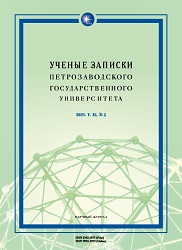ОСОБЕННОСТИ УПОТРЕБЛЕНИЯ ЦВЕТООБОЗНАЧАЮЩЕЙ ЛЕКСИКИ В ДРЕВНЕТЮРКСКИХ ПИСЬМЕННЫХ ИСТОЧНИКАХ
THE USE OF COLOR TERMS IN ANCIENT TURKIC WRITTEN SOURCES
Author(s): Rimma Talgatovna MuratovaSubject(s): Ancient World, Lexis, Semantics, Historical Linguistics
Published by: Петрозаводский государственный университет
Keywords: color terms; ancient Turkic written monuments; colorative epithets; metaphorization of coloronyms; Turkic languages;
Summary/Abstract: The relevance of the research is due to the lack of review and analysis of ancient Turkic sources for the study of the peculiarities of the use of color terms. In this regard, the research task is to identify the color-denoting vocabulary recorded in the written monuments of the ancient Turks, and to study their functioning from the point of view of their structural and semantic specifics. The purpose of the article is to outline the main trends in the use of color lexemes in the ancient period, both structurally and lexico-semantically. The research was carried out using the methods of continuous sampling, systematization, classifi cation of lexical material and the descriptive analytical method. Published ancient Turkic written sources and lexicographic works based on these monuments were used as the research material. The analysis of the color terms recorded in the studied sources revealed the following features of the use of lexemes for expressing color: the monuments contained almost all the basic color terms that date back to ancient times – names of spectral, achromatic, and non-spectral colors, names of horse coat colors, as well as color coding with limited functionality; the use of two variants of lexemes for white – aq and örüŋ – was recorded, which at that time had clear distinction in semantics: aq was mainly used to describe the color of a horse, while örüŋ was used for white objects in general; the polysemy of color-denoting vocabulary was clearly traced: besides describing colors, they can express connotative semantics, take an active part in word formation or act as the components of onomastic terms; in terms of their structure, most of the revealed color names are monolexemes, but there are also comparative forms of color adjectives and analytical names.
Journal: Ученые записки Петрозаводского государственного университета
- Issue Year: 43/2021
- Issue No: 5
- Page Range: 35-41
- Page Count: 7
- Language: Russian

